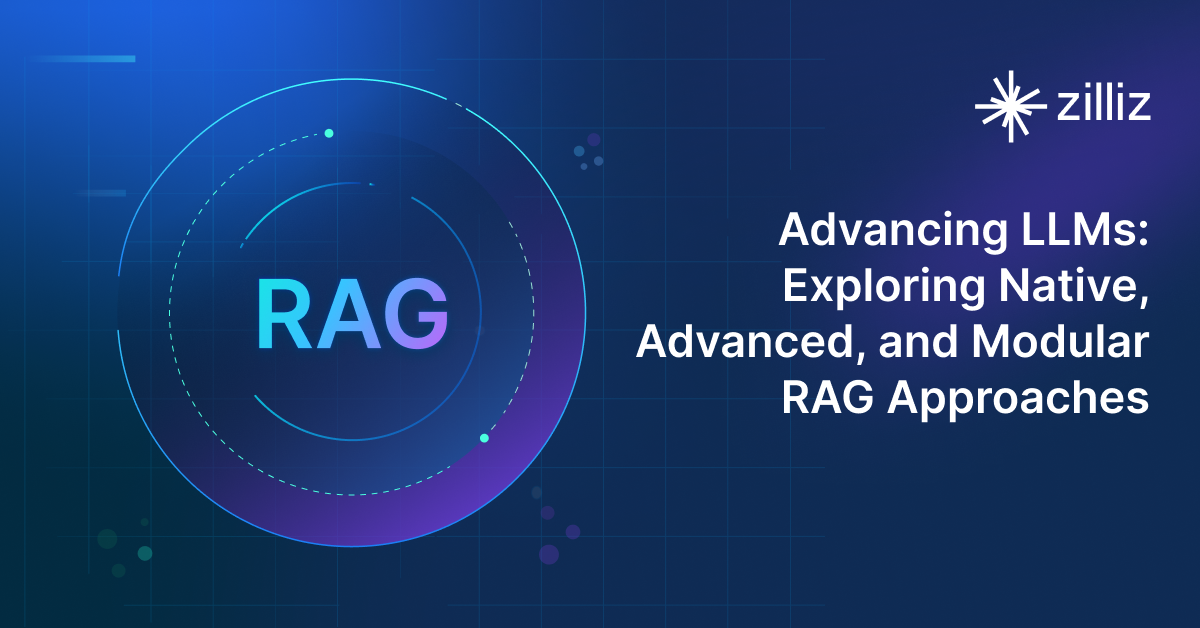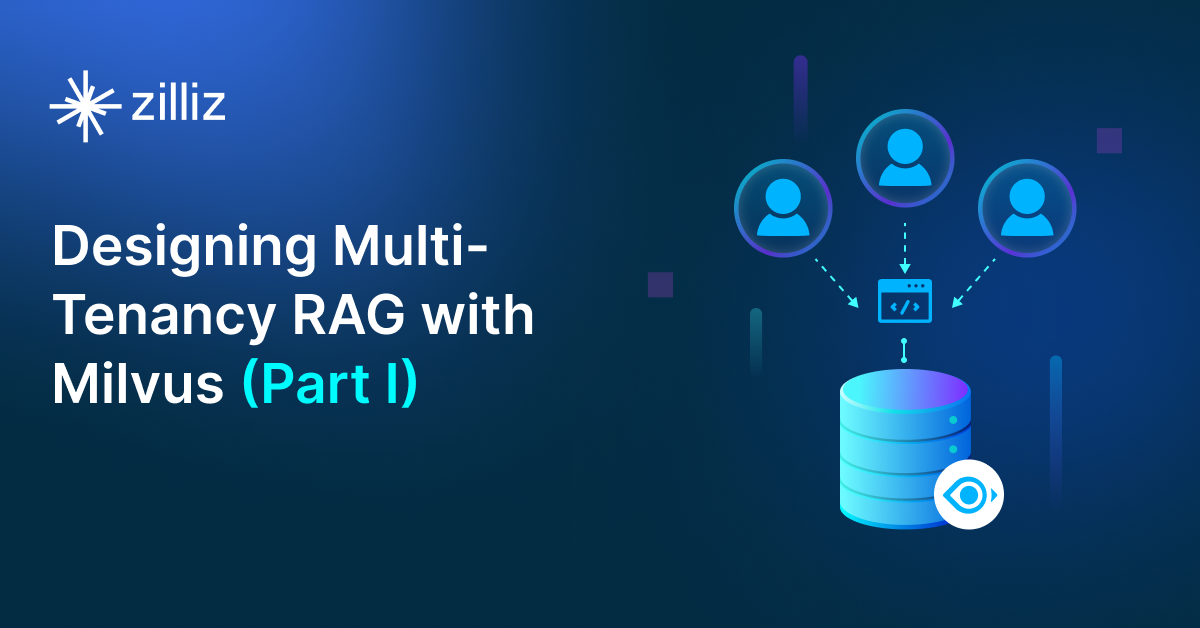Build RAG Chatbot with LangChain, LangChain vector store, Anthropic Claude 3 Opus, and IBM granite-embedding-278m-multilingual
Introduction to RAG
Retrieval-Augmented Generation (RAG) is a game-changer for GenAI applications, especially in conversational AI. It combines the power of pre-trained large language models (LLMs) like OpenAI’s GPT with external knowledge sources stored in vector databases such as Milvus and Zilliz Cloud, allowing for more accurate, contextually relevant, and up-to-date response generation. A RAG pipeline usually consists of four basic components: a vector database, an embedding model, an LLM, and a framework.
Key Components We'll Use for This RAG Chatbot
This tutorial shows you how to build a simple RAG chatbot in Python using the following components:
- LangChain: An open-source framework that helps you orchestrate the interaction between LLMs, vector stores, embedding models, etc, making it easier to integrate a RAG pipeline.
- LangChain in-memory vector store: an in-memory, ephemeral vector store that stores embeddings in-memory and does an exact, linear search for the most similar embeddings. The default similarity metric is cosine similarity, but can be changed to any of the similarity metrics supported by ml-distance. It is intended for demos and does not yet support ids or deletion. (If you want a much more scalable solution for your apps or even enterprise projects, we recommend using Zilliz Cloud, which is a fully managed vector database service built on the open-source Milvusand offers a free tier supporting up to 1 million vectors.)
- Anthropic Claude 3 Opus: This advanced model in the Claude 3 series is designed for complex reasoning and nuanced conversations. It combines deep understanding with ethical considerations, making it ideal for sensitive applications like customer support, therapy chatbots, and content generation where context and empathy are paramount.
- IBM granite-embedding-278m-multilingual: This advanced AI model specializes in generating multilingual text embeddings, making it highly effective for tasks such as cross-linguistic information retrieval and translation. With its strength in understanding diverse languages, it excels in applications involving global datasets and multilingual customer engagement.
By the end of this tutorial, you’ll have a functional chatbot capable of answering questions based on a custom knowledge base.
Note: Since we may use proprietary models in our tutorials, make sure you have the required API key beforehand.
Step 1: Install and Set Up LangChain
%pip install --quiet --upgrade langchain-text-splitters langchain-community langgraph
Step 2: Install and Set Up Anthropic Claude 3 Opus
pip install -qU "langchain[anthropic]"
import getpass
import os
if not os.environ.get("ANTHROPIC_API_KEY"):
os.environ["ANTHROPIC_API_KEY"] = getpass.getpass("Enter API key for Anthropic: ")
from langchain.chat_models import init_chat_model
llm = init_chat_model("claude-3-opus-latest", model_provider="anthropic")
Step 3: Install and Set Up IBM granite-embedding-278m-multilingual
pip install -qU langchain-ibm
import getpass
import os
if not os.environ.get("WATSONX_APIKEY"):
os.environ["WATSONX_APIKEY"] = getpass.getpass("Enter API key for IBM watsonx: ")
from langchain_ibm import WatsonxEmbeddings
embeddings = WatsonxEmbeddings(
model_id="ibm/granite-embedding-278m-multilingual",
url="https://us-south.ml.cloud.ibm.com",
project_id="<WATSONX PROJECT_ID>",
)
Step 4: Install and Set Up LangChain vector store
pip install -qU langchain-core
from langchain_core.vectorstores import InMemoryVectorStore
vector_store = InMemoryVectorStore(embeddings)
Step 5: Build a RAG Chatbot
Now that you’ve set up all components, let’s start to build a simple chatbot. We’ll use the Milvus introduction doc as a private knowledge base. You can replace it with your own dataset to customize your RAG chatbot.
import bs4
from langchain import hub
from langchain_community.document_loaders import WebBaseLoader
from langchain_core.documents import Document
from langchain_text_splitters import RecursiveCharacterTextSplitter
from langgraph.graph import START, StateGraph
from typing_extensions import List, TypedDict
# Load and chunk contents of the blog
loader = WebBaseLoader(
web_paths=("https://milvus.io/docs/overview.md",),
bs_kwargs=dict(
parse_only=bs4.SoupStrainer(
class_=("doc-style doc-post-content")
)
),
)
docs = loader.load()
text_splitter = RecursiveCharacterTextSplitter(chunk_size=1000, chunk_overlap=200)
all_splits = text_splitter.split_documents(docs)
# Index chunks
_ = vector_store.add_documents(documents=all_splits)
# Define prompt for question-answering
prompt = hub.pull("rlm/rag-prompt")
# Define state for application
class State(TypedDict):
question: str
context: List[Document]
answer: str
# Define application steps
def retrieve(state: State):
retrieved_docs = vector_store.similarity_search(state["question"])
return {"context": retrieved_docs}
def generate(state: State):
docs_content = "\n\n".join(doc.page_content for doc in state["context"])
messages = prompt.invoke({"question": state["question"], "context": docs_content})
response = llm.invoke(messages)
return {"answer": response.content}
# Compile application and test
graph_builder = StateGraph(State).add_sequence([retrieve, generate])
graph_builder.add_edge(START, "retrieve")
graph = graph_builder.compile()
Test the Chatbot
Yeah! You've built your own chatbot. Let's ask the chatbot a question.
response = graph.invoke({"question": "What data types does Milvus support?"})
print(response["answer"])
Example Output
Milvus supports various data types including sparse vectors, binary vectors, JSON, and arrays. Additionally, it handles common numerical and character types, making it versatile for different data modeling needs. This allows users to manage unstructured or multi-modal data efficiently.
Optimization Tips
As you build your RAG system, optimization is key to ensuring peak performance and efficiency. While setting up the components is an essential first step, fine-tuning each one will help you create a solution that works even better and scales seamlessly. In this section, we’ll share some practical tips for optimizing all these components, giving you the edge to build smarter, faster, and more responsive RAG applications.
LangChain optimization tips
To optimize LangChain, focus on minimizing redundant operations in your workflow by structuring your chains and agents efficiently. Use caching to avoid repeated computations, speeding up your system, and experiment with modular design to ensure that components like models or databases can be easily swapped out. This will provide both flexibility and efficiency, allowing you to quickly scale your system without unnecessary delays or complications.
LangChain in-memory vector store optimization tips
LangChain in-memory vector store is just an ephemeral vector store that stores embeddings in-memory and does an exact, linear search for the most similar embeddings. It has very limited features and is only intended for demos. If you plan to build a functional or even production-level solution, we recommend using Zilliz Cloud, which is a fully managed vector database service built on the open-source Milvus and offers a free tier supporting up to 1 million vectors.)
Anthropic Claude 3 Opus optimization tips
Claude 3 Opus is a powerful model for RAG applications requiring deep reasoning and high-quality responses. Optimize performance by structuring retrieval results effectively, ensuring that only the most relevant context is provided to avoid unnecessary token usage. Utilize a ranker to prioritize key passages before sending them to the model, preventing information overload and improving response quality. Fine-tune hyperparameters like temperature (0.1–0.3 for factual tasks) and top-k sampling to maintain accuracy while controlling response variation. If cost and speed are concerns, use Claude 3 Opus selectively for complex queries while relying on a smaller model like Claude 3 Haiku for simpler tasks. Implement caching for repeated or high-frequency queries to minimize API calls and improve latency. Use Claude’s parallel processing capabilities where applicable to handle multiple document queries efficiently.
IBM granite-embedding-278m-multilingual optimization tips
To optimize the IBM granite-embedding-278m-multilingual for your Retrieval-Augmented Generation (RAG) setup, consider fine-tuning the model on domain-specific data relevant to your use case, which helps improve accuracy in embeddings. Use mini-batches when processing queries to balance memory efficiency and speed, ensuring you leverage GPU acceleration. Implement a caching mechanism for frequently accessed documents to reduce retrieval latency, and experiment with different similarity metrics to find the most effective one for your data. Regularly monitor the performance and iterate over hyperparameters such as learning rates and embedding dimensions to further enhance your retrieval capabilities.
By implementing these tips across your components, you'll be able to enhance the performance and functionality of your RAG system, ensuring it’s optimized for both speed and accuracy. Keep testing, iterating, and refining your setup to stay ahead in the ever-evolving world of AI development.
RAG Cost Calculator: A Free Tool to Calculate Your Cost in Seconds
Estimating the cost of a Retrieval-Augmented Generation (RAG) pipeline involves analyzing expenses across vector storage, compute resources, and API usage. Key cost drivers include vector database queries, embedding generation, and LLM inference.
RAG Cost Calculator is a free tool that quickly estimates the cost of building a RAG pipeline, including chunking, embedding, vector storage/search, and LLM generation. It also helps you identify cost-saving opportunities and achieve up to 10x cost reduction on vector databases with the serverless option.
 Calculate your RAG cost
Calculate your RAG cost
What Have You Learned?
By now, you’ve seen firsthand how the magic of combining cutting-edge tools can transform raw data into intelligent, responsive systems! You learned how LangChain acts as the glue that binds everything together—orchestrating the flow of data between your documents, the IBM granite-embedding-278m-multilingual model (which converts text into rich, searchable vectors), and the LangChain vector store that smartly organizes those embeddings for lightning-fast retrieval. Together, these pieces create a pipeline that lets Anthropic Claude 3 Opus, your powerhouse LLM, generate accurate, context-aware answers by pulling insights directly from your custom knowledge base. It’s like giving Claude a supercharged library card! You also discovered practical optimizations, like tweaking chunk sizes for embeddings or filtering metadata to refine retrieval, ensuring your RAG system runs efficiently without breaking the bank—especially with tools like the free RAG cost calculator to keep your budget in check.
But this isn’t just about following steps—it’s about unlocking creativity! You’ve got the foundation to build anything from multilingual customer support bots to research assistants that dig through mountains of data in seconds. The future is wide open, and your toolkit is ready. So go ahead—experiment, iterate, and let your ideas fly. Tweak those parameters, test new datasets, or even swap components to see how different models play together. The world of RAG is yours to explore, and every line of code you write brings us closer to smarter, more human-centric AI. What will you build next? Dive in, optimize fearlessly, and turn those "what ifs" into "heck yes!" moments. The next breakthrough is waiting for your spark! 🚀
Further Resources
🌟 In addition to this RAG tutorial, unleash your full potential with these incredible resources to level up your RAG skills.
- How to Build a Multimodal RAG | Documentation
- How to Enhance the Performance of Your RAG Pipeline
- Graph RAG with Milvus | Documentation
- How to Evaluate RAG Applications - Zilliz Learn
- Generative AI Resource Hub | Zilliz
We'd Love to Hear What You Think!
We’d love to hear your thoughts! 🌟 Leave your questions or comments below or join our vibrant Milvus Discord community to share your experiences, ask questions, or connect with thousands of AI enthusiasts. Your journey matters to us!
If you like this tutorial, show your support by giving our Milvus GitHub repo a star ⭐—it means the world to us and inspires us to keep creating! 💖
- Introduction to RAG
- Key Components We'll Use for This RAG Chatbot
- Step 1: Install and Set Up LangChain
- Step 2: Install and Set Up Anthropic Claude 3 Opus
- Step 3: Install and Set Up IBM granite-embedding-278m-multilingual
- Step 4: Install and Set Up LangChain vector store
- Step 5: Build a RAG Chatbot
- Optimization Tips
- RAG Cost Calculator: A Free Tool to Calculate Your Cost in Seconds
- What Have You Learned?
- Further Resources
- We'd Love to Hear What You Think!
Content
Vector Database at Scale
Zilliz Cloud is a fully-managed vector database built for scale, perfect for your RAG apps.
Try Zilliz Cloud for Free


